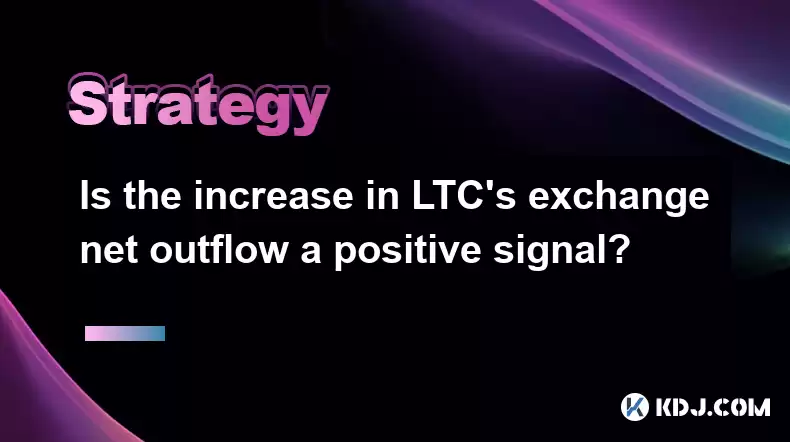-
 Bitcoin
Bitcoin $114500
-0.31% -
 Ethereum
Ethereum $3648
1.11% -
 XRP
XRP $3.033
-0.27% -
 Tether USDt
Tether USDt $0.9999
-0.01% -
 BNB
BNB $758.5
-0.32% -
 Solana
Solana $167.5
1.48% -
 USDC
USDC $0.9998
-0.02% -
 TRON
TRON $0.3331
0.74% -
 Dogecoin
Dogecoin $0.2039
0.25% -
 Cardano
Cardano $0.7419
-0.46% -
 Hyperliquid
Hyperliquid $39.21
2.66% -
 Stellar
Stellar $0.4049
-1.95% -
 Sui
Sui $3.483
-0.56% -
 Bitcoin Cash
Bitcoin Cash $570.8
2.89% -
 Chainlink
Chainlink $16.67
-0.57% -
 Hedera
Hedera $0.2470
-1.57% -
 Ethena USDe
Ethena USDe $1.001
0.00% -
 Avalanche
Avalanche $22.36
1.52% -
 Litecoin
Litecoin $123.4
4.35% -
 UNUS SED LEO
UNUS SED LEO $8.989
0.09% -
 Toncoin
Toncoin $3.324
-2.40% -
 Shiba Inu
Shiba Inu $0.00001219
-1.30% -
 Uniswap
Uniswap $9.811
2.54% -
 Polkadot
Polkadot $3.662
-0.07% -
 Monero
Monero $295.5
-3.85% -
 Dai
Dai $1.000
0.01% -
 Bitget Token
Bitget Token $4.345
0.24% -
 Cronos
Cronos $0.1380
0.95% -
 Pepe
Pepe $0.00001044
-1.14% -
 Ethena
Ethena $0.5981
-4.24%
Is the increase in LTC's exchange net outflow a positive signal?
Increased LTC exchange net outflow may signal bullish sentiment, reducing supply on exchanges and potentially driving up prices if demand remains steady.
Apr 22, 2025 at 06:56 pm

The phenomenon of an increase in LTC's exchange net outflow has recently sparked interest and debate within the cryptocurrency community. This article will delve into the implications of such a trend, exploring whether it can be interpreted as a positive signal for Litecoin (LTC). We will examine the mechanics behind exchange net outflow, its impact on Litecoin's market dynamics, and what it could signify for investors and traders.
Understanding Exchange Net Outflow
Exchange net outflow refers to the net amount of a cryptocurrency, in this case, Litecoin, that is withdrawn from exchanges. When more LTC is withdrawn than deposited, the net outflow increases. This metric is closely watched by market analysts as it can provide insights into investor behavior and market sentiment.
The mechanics of exchange net outflow are straightforward. When users withdraw their LTC from exchanges to personal wallets, it typically indicates a desire to hold the cryptocurrency long-term. Conversely, when users deposit LTC into exchanges, it often signals an intent to sell. Therefore, a rising net outflow suggests that more users are choosing to hold their LTC off exchanges, potentially indicating a bullish sentiment.
Impact on Litecoin's Market Dynamics
An increase in LTC's exchange net outflow can have several impacts on its market dynamics. Firstly, it can lead to a reduction in available supply on exchanges. When fewer LTC are available for trading, the dynamics of supply and demand can shift, potentially driving up the price if demand remains constant or increases.
Secondly, a higher net outflow can be interpreted as a sign of increasing confidence among LTC holders. When investors move their assets to personal wallets, they are often doing so to protect their holdings from exchange hacks or to prepare for long-term investment. This behavior can be seen as a vote of confidence in the future value of Litecoin.
Moreover, an increase in net outflow can contribute to market stability. When fewer LTC are on exchanges, the market becomes less susceptible to sudden sell-offs, which can reduce volatility and create a more stable trading environment.
Historical Context and Case Studies
To better understand the implications of increased LTC exchange net outflow, it is helpful to look at historical data and case studies. For instance, in the past, periods of high net outflow for Litecoin have often preceded price increases. This correlation suggests that when investors move their LTC off exchanges, it can be a precursor to bullish market conditions.
One notable case occurred in early 2021 when Litecoin experienced a significant increase in exchange net outflow. This period was followed by a notable price surge, reinforcing the idea that net outflow can be a positive signal. By examining these historical trends, investors can gain a better understanding of how net outflow might influence future market movements.
Analyzing Investor Sentiment
The increase in LTC's exchange net outflow can also be a valuable indicator of investor sentiment. When more investors are withdrawing their LTC from exchanges, it suggests a growing belief in the cryptocurrency's long-term value. This sentiment can be influenced by various factors, including market news, technological developments, and broader economic trends.
To gauge investor sentiment more accurately, it is essential to consider other metrics alongside net outflow. For example, trading volume and social media activity can provide additional context. High trading volumes coupled with increased net outflow might indicate strong market interest, while increased social media activity can reflect growing public awareness and enthusiasm for Litecoin.
Potential Risks and Considerations
While an increase in LTC's exchange net outflow can be a positive signal, it is important to consider potential risks and other factors that might influence the market. For instance, regulatory changes or security concerns could prompt investors to move their LTC off exchanges without necessarily reflecting bullish sentiment.
Additionally, the timing of net outflow can be critical. If the increase in net outflow occurs during a period of market uncertainty, it might not necessarily lead to a price increase. Therefore, it is crucial for investors to consider the broader market context when interpreting net outflow data.
Practical Implications for Investors and Traders
For investors and traders, understanding the implications of LTC's exchange net outflow can inform their strategies. Here are some practical steps they might take:
- Monitor Net Outflow Data: Use tools and platforms that provide real-time data on LTC's exchange net outflow to stay informed about market trends.
- Assess Market Context: Consider other market indicators such as trading volume, price trends, and news events to get a comprehensive view of the market.
- Adjust Trading Strategies: If net outflow is increasing, consider adjusting trading strategies to take advantage of potential price increases. This might involve holding LTC long-term or setting buy orders at strategic price levels.
- Diversify Holdings: To mitigate risks, diversify cryptocurrency holdings and not rely solely on LTC's net outflow as a trading signal.
By taking these steps, investors and traders can better navigate the complexities of the cryptocurrency market and make more informed decisions.
Frequently Asked Questions
Q: How can I track LTC's exchange net outflow in real-time?
A: You can track LTC's exchange net outflow using various cryptocurrency analytics platforms such as Glassnode, CryptoQuant, or CoinMetrics. These platforms provide real-time data and historical charts that can help you monitor net outflow trends.
Q: Does an increase in net outflow always lead to a price increase for LTC?
A: Not always. While an increase in net outflow can be a positive signal, other factors such as market sentiment, regulatory changes, and broader economic conditions can influence LTC's price. It is important to consider these factors alongside net outflow data.
Q: How can I protect my LTC holdings from exchange hacks?
A: To protect your LTC holdings from exchange hacks, consider the following steps:
- Use cold storage: Store your LTC in hardware wallets or paper wallets, which are not connected to the internet.
- Enable two-factor authentication (2FA): Add an extra layer of security to your exchange accounts.
- Regularly withdraw funds: Keep only the amount of LTC necessary for trading on exchanges, and regularly withdraw the rest to your personal wallets.
Q: Can net outflow data be used for short-term trading strategies?
A: Yes, net outflow data can be used for short-term trading strategies, but it should be combined with other technical and fundamental analysis. For instance, if you observe a significant increase in net outflow alongside rising trading volume, it might be an opportune time to enter a long position on LTC. However, always consider the broader market context and use stop-loss orders to manage risk.
Disclaimer:info@kdj.com
The information provided is not trading advice. kdj.com does not assume any responsibility for any investments made based on the information provided in this article. Cryptocurrencies are highly volatile and it is highly recommended that you invest with caution after thorough research!
If you believe that the content used on this website infringes your copyright, please contact us immediately (info@kdj.com) and we will delete it promptly.
- Meme Coins Skyrocket: Is Dogecoin About to Be Dethroned?
- 2025-08-06 03:50:13
- Tether's On-Chain Surge: USDT Dominates and Drives Blockchain Fees
- 2025-08-06 02:50:13
- Bitcoin, Treasury, Country: Bolivia Follows El Salvador's Lead, While TON Strategy Co. Makes Waves
- 2025-08-06 03:50:13
- Succinct's PROVE Token & Mainnet Launch: A New Era for ZK Proofs
- 2025-08-06 02:50:13
- CEA Industries Rebrands as BNB Network Company: A New Era for BNB Treasury
- 2025-08-06 03:55:14
- Terra Classic's Market Module Revival: The v3.5.0 Upgrade and What It Means for LUNC
- 2025-08-06 02:30:12
Related knowledge

How to avoid common crypto investment mistakes?
Jul 13,2025 at 01:35am
Understanding the Risks of Crypto InvestmentInvesting in cryptocurrency can be highly rewarding, but it also comes with significant risks. One of the ...

What is a long-short crypto strategy?
Jul 15,2025 at 10:56am
Understanding the Basics of a Long-Short Crypto StrategyA long-short crypto strategy is an investment approach where traders simultaneously take long ...

What is a long-short crypto strategy?
Jul 11,2025 at 01:28pm
Understanding the Basics of Long-Short Crypto StrategyA long-short crypto strategy is an investment approach where traders take both long and short po...

How to use the RSI indicator for crypto?
Jul 12,2025 at 03:56pm
Understanding the RSI Indicator in Cryptocurrency TradingThe Relative Strength Index (RSI) is a momentum oscillator used to measure the speed and chan...

Is copy trading a good strategy for crypto beginners?
Jul 12,2025 at 08:28am
Understanding Copy Trading in the Cryptocurrency MarketCopy trading is a strategy where novice traders replicate the trades of experienced investors a...

How to build a crypto portfolio with $1000?
Jul 13,2025 at 08:14pm
Understanding the Basics of Cryptocurrency InvestmentBuilding a crypto portfolio with $1000 starts with understanding the fundamentals of cryptocurren...

How to avoid common crypto investment mistakes?
Jul 13,2025 at 01:35am
Understanding the Risks of Crypto InvestmentInvesting in cryptocurrency can be highly rewarding, but it also comes with significant risks. One of the ...

What is a long-short crypto strategy?
Jul 15,2025 at 10:56am
Understanding the Basics of a Long-Short Crypto StrategyA long-short crypto strategy is an investment approach where traders simultaneously take long ...

What is a long-short crypto strategy?
Jul 11,2025 at 01:28pm
Understanding the Basics of Long-Short Crypto StrategyA long-short crypto strategy is an investment approach where traders take both long and short po...

How to use the RSI indicator for crypto?
Jul 12,2025 at 03:56pm
Understanding the RSI Indicator in Cryptocurrency TradingThe Relative Strength Index (RSI) is a momentum oscillator used to measure the speed and chan...

Is copy trading a good strategy for crypto beginners?
Jul 12,2025 at 08:28am
Understanding Copy Trading in the Cryptocurrency MarketCopy trading is a strategy where novice traders replicate the trades of experienced investors a...

How to build a crypto portfolio with $1000?
Jul 13,2025 at 08:14pm
Understanding the Basics of Cryptocurrency InvestmentBuilding a crypto portfolio with $1000 starts with understanding the fundamentals of cryptocurren...
See all articles

























































































